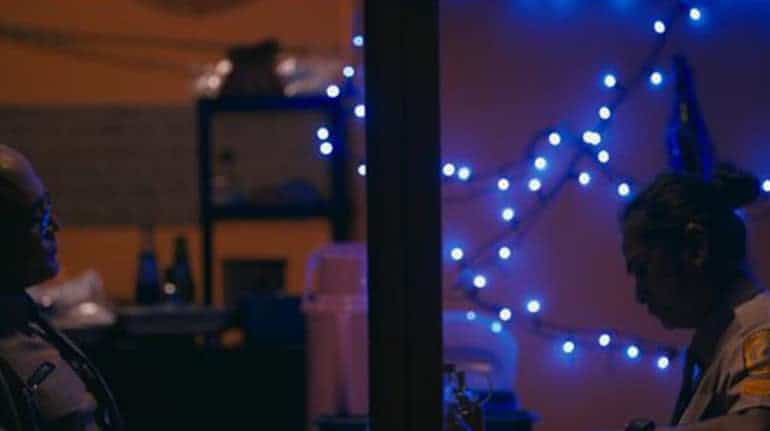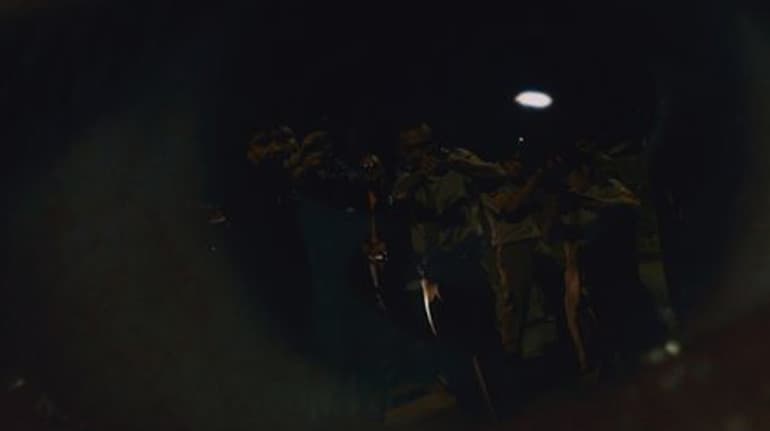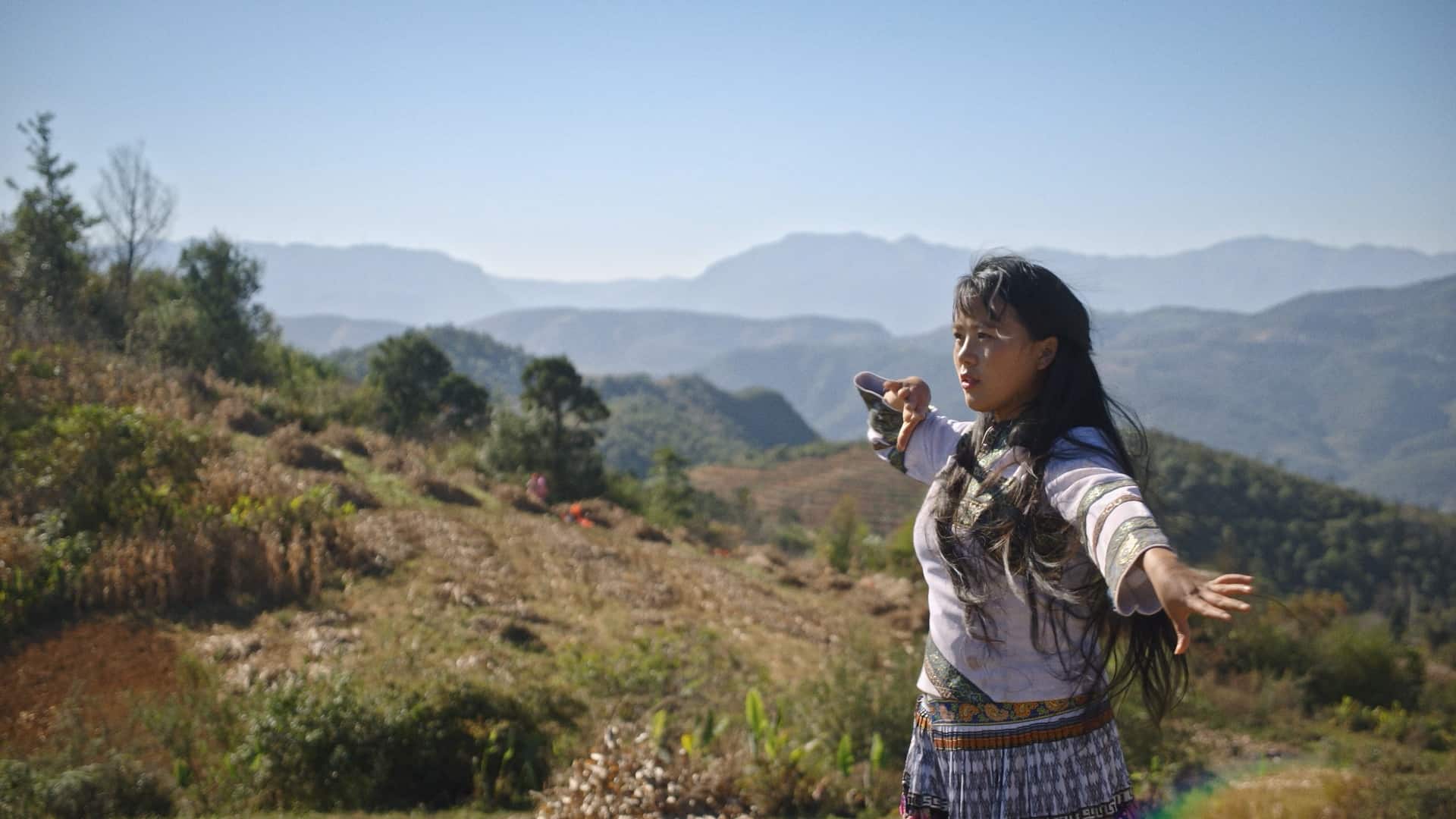Khavn's opinion about the police force has always been quite eloquent, as for example in the following segment of the interview he gave to AMP for Alipato: The Very Brief Life of an Ember” :
[Is the fact that the policemen frequent a bar in a pigsty a clear comment on the police in general? What is your opinion of the way police functions in the Philippines?
Khavn: “Let's not insult pigs—I like them a lot. But yes, the non-pigsty-wallowing police is the exception rather than the rule. The police is the corrupt muscle of politicians and the ruling class. This is the subject of my next film, “Bamboo Dogs”.”]
“Bamboo Dogs” deals with an incident revolving around the Kuratong Baleleng gang, an organized crime syndicate in the Philippines that once was an anti-communist vigilante group.
On May 18, 1995 at around 5 a.m., 11 people were shot and killed on Commonwealth Avenue, Quezon City. Hours later, PNP Chief Supts. Panfilo Lacson, Jewel Canson and Romeo Acop, and Sr. Supt. Francisco Zubia held a press conference. With then-PNP boss Recaredo Sarmiento, they said the 11 were members of the dreaded Kuratong Baleleng gang that the Anti-Bank Robbery Task Force had long been after. The task force had sighted them in a van, pursued them, and a shootout ensued. Later that day, two more persons were found dead from gunshots, one in Pasig and the other in Laguna.

The next day, tabloid photographer Armando Capili revealed in a headline story that the police had rubbed out the 11 alleged robbers. He said he saw most of the bodies handcuffed behind their backs, and that policemen had planted two armalites inside the bullet-riddled van. His story did not receive much attention until May 21, when Officer Eduardo de los Reyes went to ABS-CBN with a stunning story. As investigators, he and Officer Corazon de la Cruz had been sent to the scene to study how they could file an official but false report that the ratratan, or summary execution, was a legitimate shootout. They couldn't live with the illegal order and thus decided to tell the truth. It appeared from their accounts that eight males, two of them minors, had been arrested at the Kuratong hideout in Las Piñas's Superville Subd. on the night of May 17. All eight were brought to Camp Crame headquarters, where two other captives (crimes unknown) were thrown in with them. All ten were then loaded into the gang's van and taken to Commonwealth where they met their end. The eleventh body supposedly had been in the Camp Crame morgue for days, a victim of a separate execution for still unknown reason. The body found in Pasig was Kuratong gang leader Wilson Soronda and the one in Laguna was the moneybag; both had been arrested also on the night of May 17 but in another hideout. (You can read the rest of this excellent article at https://www.philstar.com/opinion/2002/02/20/151281/kuratong-baleleng-massacre-revisited).
With his opinion about the police and the details of the particular case, and his recent turn towards adaptations of actual stories, as in the case of “Balangiga: Howling Wilderness“, Khavn could not stay away from such a film, although his presentation is once more unique and quite opinionated for that matter.
The film begins with a lengthy single shot that introduces us to the main characters, police officers Esquivel and Corazon who are to escort four members of the Kuratong Baleleng gang, Korpo, Meleubren, Alapaap and Welbor to another police station. Khavn wastes no time in presenting the ties between the gang and the police, as Esquivel immediately mentions to their leader, Korpo that they will be released soon. As they all ride in a police van, the relationship between Esquivel and the gang proves to be even more chummy, with the gang members frequently mentioning that they work for the police.

The film then takes a different turn stylistically, with the scenes inside the van unfolding as a stage play of sorts and the exterior ones as a road trip. The almost constant change of shots, courtesy of Albert Banzon's cinematography and Carlo Francisco Manatad's frantic editing induces the film with a sense of deliriousness, while Khavn's music gives it music video aesthetics, as is usual the case with his films.
The overall essence of the movie up to that point, however, is a playfully crude one, with the guys joking about women, sex and the fact that the 14-year-old kid of the gang is still not circumcised and also still a virgin. The only one who seems troubled by the whole scenario is officer Corazon, a divorced mother who feels quite uncomfortable with the overall situation, particularly the chumminess between the gang and Esquivel.
This sense takes a turn towards the rather tense when the two police officers receive an order that changes everything (I am sure you can guess what it is) with them being disappointed and the gang members gradually realizing that all is not going to according to plan. The film then takes a turn towards the thriller, particularly as soon as some other, not so friendly policemen get involved. A cat that gets butchered in the wheels of the car seems like an awful premonition, and the disaster is soon to follow.
Khavn uses his own unique approach to present a very serious topic, once more pulling no punches in both his comments about the case and his presentation. Furthermore, the focus is not actually on the case, but on the ties of the police with organized crime, and in general the corruption of the Force at the time. At the same time, the fact that not all police officers were the same is highlighted quite eloquently, although this is a comment on the level of corruption and cruelty and not on its existence.

The acting is in complete resonance with the overall aesthetics of the movie. Dido de La Paz as Esquivel and Ron Capinding as Alapaap steal the show, with the latter filling the narrative with his constant and quite loud laughing, mostly deriving from jokes that address Arnel Buenavent that plays the boy. The latter is also the protagonist of one of the most impressive sequences in the film, where Khavn presents a surrealistic version of the “your whole life passing in front of your eyes” concept.
The events of the last scenes are quite harsh and gory, but Khavn could not but end the film on a playful note, with a music video finale that has Rez Cortez who plays Corpo dancing in the most hilarious and entertaining fashion, in a style that seems like a parody of Fatboy Slim's “Weapon of Choice” video with Christopher Walken.
Social commentary through extremity is what Khavn does best and “Bamboo Dogs” is not an exception.















